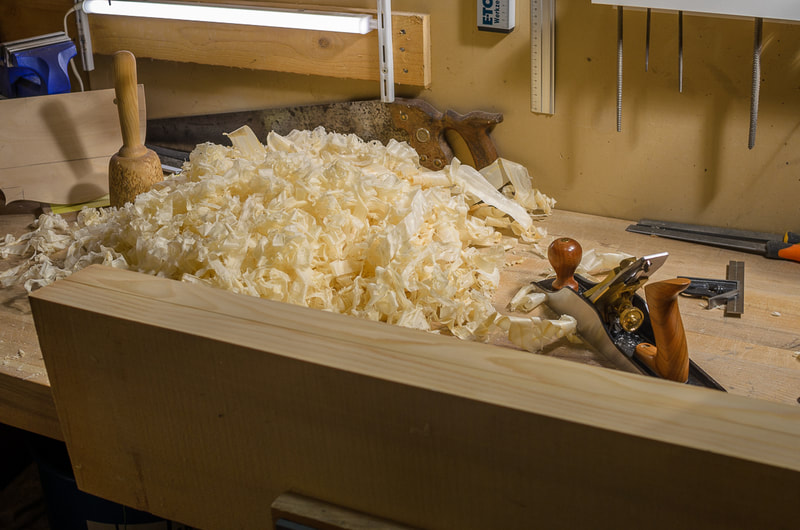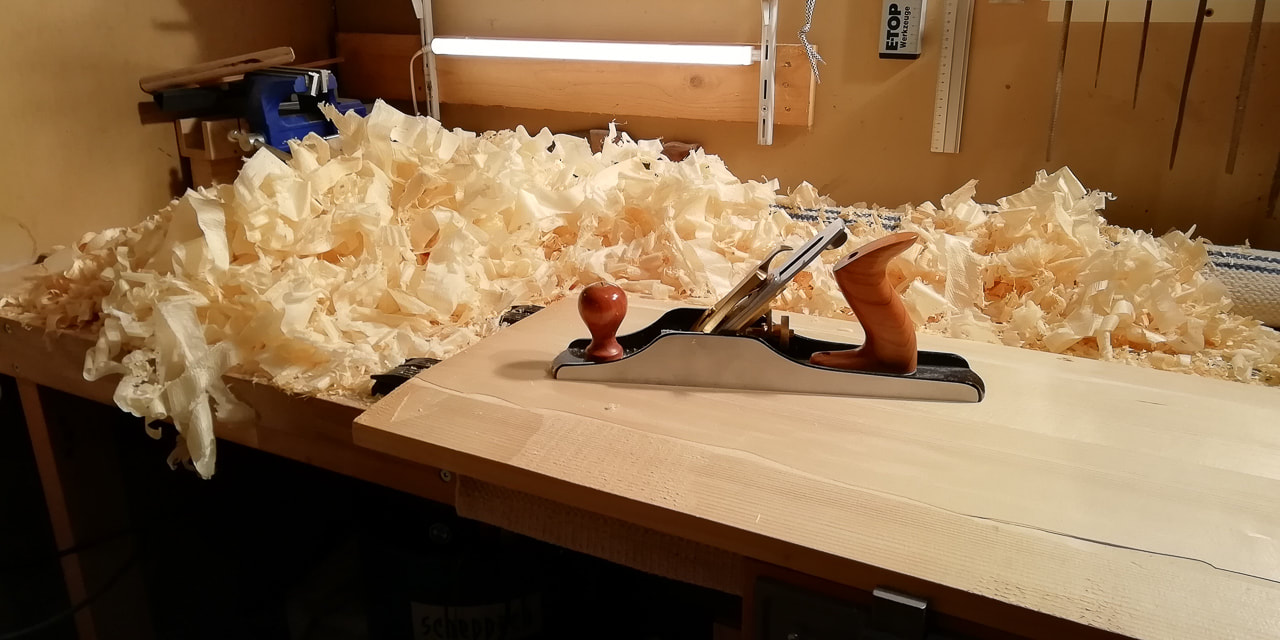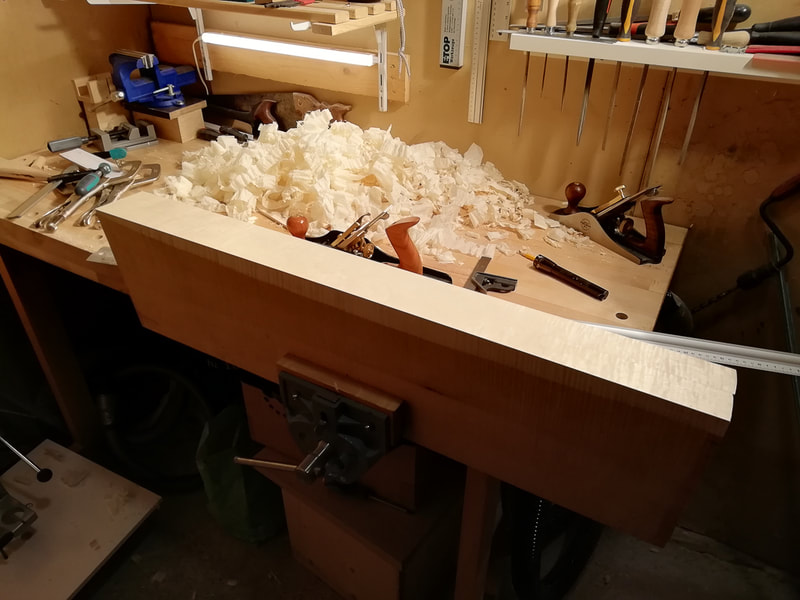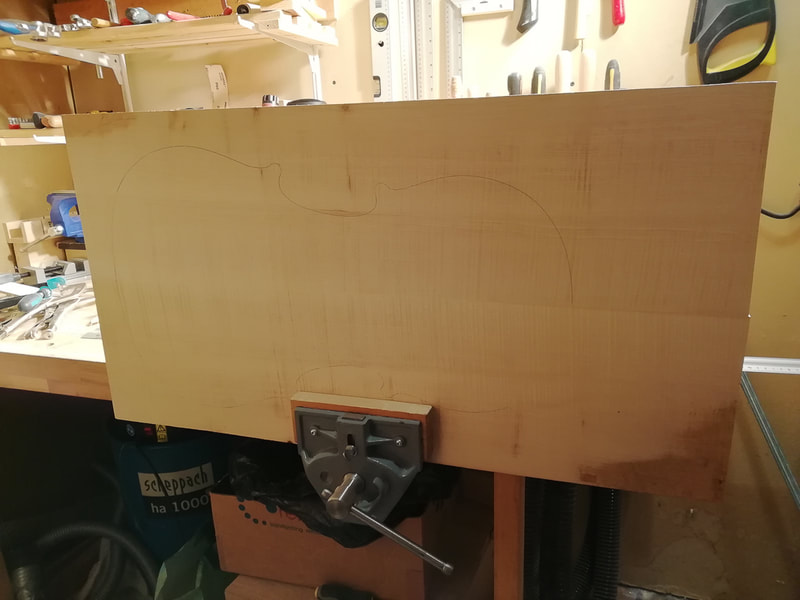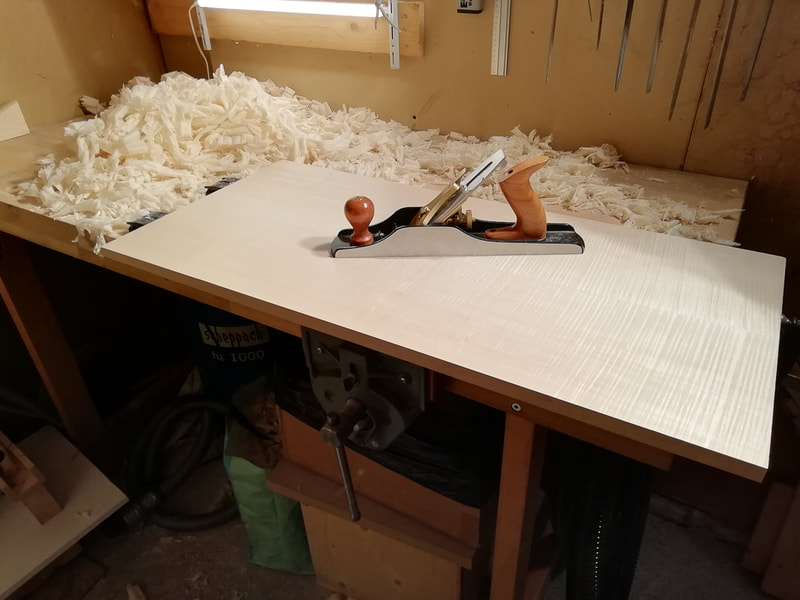|
Because the cello is so large, the back and front are made from two bookmatched pieces. That means that the two pieces come from a single large wedge which is split lengthwise and then opened up like a book. As a result the left and right sides are mirror images of each other. One sees this very clearly on the figured maple back, but not really on the spruce front. I started taking photos regularly only a little later so for this stage I don't have too much content. Preparing the spruce front I first planed roughly the underside of both pieces flat (no photo) and then prepared the edges for jointing (left). After the glueing was done, I flattened the bottom surface and brought the thickness of the top plate down (right). I had decided to do the rough arching using the overhead router method described in Henry Strobel's Cello Making and I wanted to have a fairly flat top surface for that. One could have left the top as it was. Preparing the maple back The back was done in the same way as the front. I first prepared the joint and after glueing, flattened the surfaces. The maple is quite a bit more difficult to work with since it is a lot harder, and it has a lot of figure which makes it tear up more easily. The last picture shows the figure of the maple back nicely. Some good references:
0 Comments
Leave a Reply. |
AuthorMy son is outgrowing his cello soon. Could there be a better reason to learn how to make one :). Archives
April 2021
Categories
All
|
